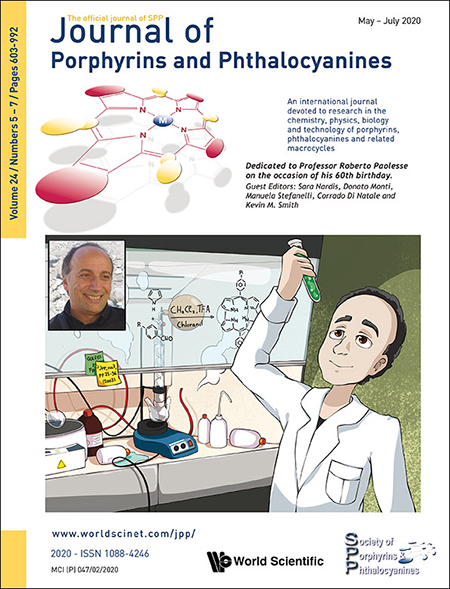Monoterpene-based metallophthalocyanines: Sustainable synthetic approaches and photophysical studies
Abstract
Tetra-substituted zinc(II) and copper(II) phthalocyanines bearing peripheral alkoxy-monoterpene groups were prepared by conventional vs. non-conventional synthetic approaches (ultrasound and microwave irradiation). The synthesis of (1-(–)-myrtenol (a) and (1,2,5-(-menthol (b) derived phthalonitrile precursors was performed through ipso-nitro aromatic substitution reactions, with optimal conditions being obtained using ultrasound irradiation, which allowed us to achieve full conversions in 4.5 h, with isolated yields up to 74%. The subsequent cyclotetramerization of monoterpene-based phthalonitriles was carried out using Zn(II) or Cu(II) salts as metal templates, and also using conventional and non-conventional heating methods. Microwave-assisted synthesis was shown to be the most efficient approach, providing complete conversions in 1 h, yielding the target monoterpene-based metallophthalocyanines in up to 70% isolated yields. Furthermore, photophysical and photochemical studies revealed that Zn(II) phthalocyanines possess fluorescence quantum yields in the range of 0.27–0.29, while Cu(II) phthalocyanines exhibited room temperature phosphorescence. In addition, the monoterpene-based Zn(II) phthalocyanines led to high singlet oxygen quantum yields ( 0.55–0.69).

Dedicated to Professor Roberto Paolesse on the occasion of his 60th birthday.
Handbook of Porphyrin Science now available in 46 volumes


